![]()
![]()
![]()
Use LEFT and RIGHT arrow keys to navigate between flashcards;
Use UP and DOWN arrow keys to flip the card;
H to show hint;
A reads text to speech;
22 Cards in this Set
- Front
- Back
|
Q
What is timbre? |
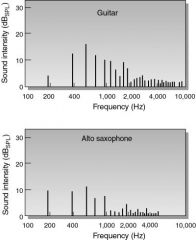
A
The blending of the fundamental tone and the overtones making up the characteristic sound quality of a sound. |
|
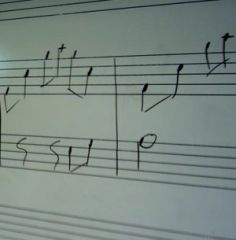
Q
What is music? |

A
A set of tones combined in ways that are pleasing to the ear. |
|

Q
What determines sound quality? |

A
Timbre, the blending of the fundamental tone (frequency) and the overtones. |
|
|
Q
Name the 4 major groups of instuments. |
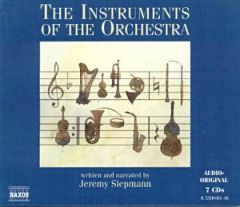
A
1. Strings 2. Brass 3. Woodwinds 4. Percussion |
|
|
What is the frequency at which a standing wave occurs in an instrument (object)called?
|
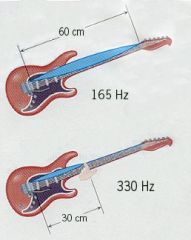
A
The resonant frequency |
|
|
Q
The resonant frequency produces a pitch called the ________. |

A
fundamental tone |
|
|
Q
What are overtones? |
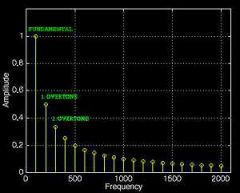
A
The higher pitched tones produced by an instrument in addition to the fundamental tone. |
|
|
Q
The sounds produced by different instruments have _____ _____. |
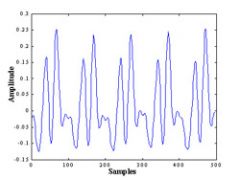
A
different timbres (this graph shows an "A" played on an oboe) |
|
|
Q
Do overtones have a higher or a lower pitch than the fundamental tone? |

A
Overtones have a higher pitch. |
|
|
Q
How is sound produced in a string instrument? |
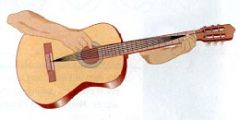
A
The string vibrates when plucked or rubbed. |
|
|
Q
What causes the sound in a brass instrument? |
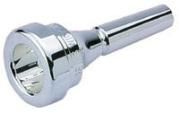
A
The player's lips vibrate when he/she blows into the mouthpiece. This causes the column of air to vibrate. |
|
|
Q
What causes the sound in a percussion instrument? |
A
The part of the instrument that is struck vibrates. |
|
|
Q
In a woodwind or brass instrument what happens if the instrument (column of air) is longer? Shorter? |

A
The longer the instrument, the lower the pitch. The shorter the instrument, the higher the pitch. |
|
|
Q
What has frequencies 2, 3 or 4 times the fundamental tone? |
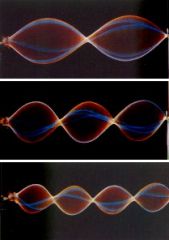
A
overtones |
|
|
Q
What is noise? |
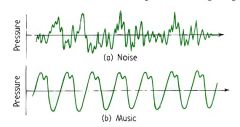
A
A sound that has: 1. no pleasing timbre 2. no identifiable pitch |
|
|
Q
Two or more sound waves interacting is called? |

A
interference |
|
|
Q
Name the types of interference. |
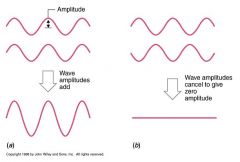
A
The are 2 types of interference: constructive interference and destructive interference. |
|
|
Q
What are acoustics? |
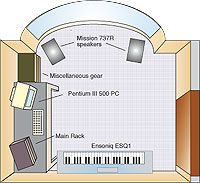
A
Acoustics describe how well sounds can be HEARD in a particular room or hall. |
|
|
Q
What are beats? |
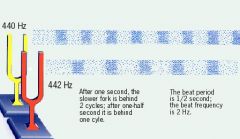
A
repeated changes in loudness when 2 or more frequencies are played together |
|
|
Q
What do you call the sound when 2 or more tones without a musical relationship are played together? |

A
dissonance |
|
|
Q
What do you call a sound with pleasing timbre and identifiable pitch? |
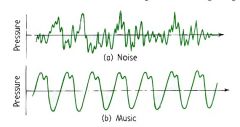
A
music |
|
|
Q
How is sound produced in a woodwind? |
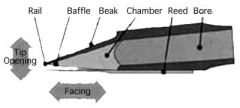
A
The reed (a thin, flexible material) vibrated when the player blows into the mouthpiece. This causes the column of air in the instrument to vibrate. |

